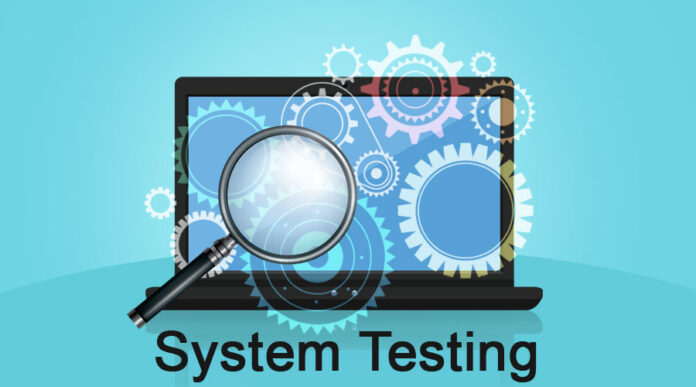Choosing the right IT provider is crucial for any business’s success. They ensure your technological needs are met, from maintaining systems to securing data. However, there comes a time when switching IT providers is necessary for better service and growth. This blog post will guide you through recognizing when to switch, evaluating your current provider, and executing a smooth transition.
Signs It’s Time to Switch

Recognizing when to switch IT providers is the first step. Common signs include frequent technical issues that disrupt your business operations, costs steadily rising without clear justification, and a noticeable decline in support quality. If your provider is not proactive about updates, fails to offer solutions for emerging needs, or lacks responsiveness, these are clear indicators that a change might be beneficial. Consistent problems with network stability, data security, or software compatibility also signal that your provider might not be keeping up with the technological advancements necessary for your business’s growth.
Assess Your Current IT Provider

Before deciding to switch, critically evaluate your current IT provider. Assess the range and quality of their services. Are they meeting your current needs? Review the contract terms. Are there hidden fees or inflexible service clauses? Understand the strengths and weaknesses of your current provider by comparing their services with market standards. This assessment will not only justify your decision to switch but also help you identify what you need in a new provider.
Define Your IT Needs
Defining your IT needs is crucial for a successful provider switch and search for perfect IT support. Beyond basic software and hardware, consider data analytics capabilities, cloud computing services, and communication tools essential for your operations. Robust cybersecurity measures are non-negotiable, given the rising cyber threats. Also, think about scalability – can the provider support your growth plans? Tailored solutions, rather than generic offerings, will better meet unique challenges. Consider future tech trends and how they might impact your business. This foresight ensures your new provider can support not just current, but also future technological advancements.
Research Potential Providers

Thorough research is key in finding new IT providers. Start with online reviews and peer referrals, but also attend industry events and webinars to learn about cutting-edge solutions. Look for providers with specific industry certifications and a proven track record in your sector. Consider their technological capabilities, customer service reputation, and their approach to innovation. Are they leaders or followers in technology trends? Analyze their case studies or success stories to gauge their expertise. Creating a shortlist of providers who understand your industry’s nuances and offer the latest technological solutions is a critical step in the selection process.
Compare Pricing and Services
Comparing pricing and services is vital. Transparent pricing helps avoid unexpected costs. Beyond the price, examine the value – does the provider offer flexible service packages, disaster recovery plans, or tailored solutions? Evaluate their service-level agreements (SLAs) for response times and resolution guarantees. Consider their investment in new technologies and customer service quality. Do they provide regular training or updates? Weighing these factors against their cost helps in identifying a provider that offers comprehensive services at a reasonable price, ensuring a beneficial investment for your business.
Check References and Reviews
Checking references and reviews offers insights into real-world experiences with potential providers. When contacting references, inquire about the provider’s ability to meet deadlines and handle emergencies. What’s their communication style? Are they proactive or reactive in managing issues? These insights are valuable for understanding a provider’s reliability, customer support quality, and effectiveness in problem-solving. Online reviews on independent platforms can also reveal patterns in customer satisfaction or common issues faced by clients, providing a comprehensive view of the provider’s performance and reputation.
Negotiating a Smooth Transition
Negotiating a smooth transition involves comprehensive discussions beyond cost. Focus on how they will manage data migration and minimize service interruptions. What support will they provide during the transition? How do they plan to address any unforeseen challenges? Ensuring clear terms for transition-related assistance, such as training for your staff or technical support during the initial phase, is crucial. This discussion should result in a clear, documented agreement covering all aspects of the transition, setting the stage for a seamless changeover and establishing a foundation for a strong working relationship.
Drafting a Transition Plan

A detailed transition plan is vital. This plan should outline a realistic timeline, define the roles and responsibilities of each party, and set milestones for tracking progress. Coordinate closely with both your current and new providers to ensure a seamless service transfer. Consider potential challenges and plan contingencies. This plan acts as a roadmap, guiding all parties through each phase of the transition, minimizing disruptions, and setting clear expectations. Regular review meetings to assess progress against the plan can help in promptly addressing any deviations or challenges.
Communication is Key
Effective communication is essential during the transition. Establish a communication plan that includes regular updates and feedback loops with all stakeholders. Designate point persons in your team and the provider’s team to manage communications. This ensures clarity, reduces the risk of misunderstandings, and keeps everyone aligned. Communication should cover progress updates, any challenges encountered, and changes to the plan. Regular, transparent communication fosters trust and collaboration, making the transition smoother for everyone involved.
Testing and Monitoring

Testing IT systems before the final switch is critical. Conduct thorough tests to ensure all functionalities work as expected. Involve end users in this testing to gather feedback on system performance and usability. After the transition, establish a monitoring regime to quickly identify and address any operational issues. This ongoing vigilance ensures the stability and efficiency of your IT systems. Regular reviews with your new provider to discuss system performance and any necessary adjustments are also crucial for maintaining optimal IT operations.
Finalize the Switch
Finalizing the switch requires ensuring all transition plan steps are complete. Evaluate the transition’s success against the original objectives and criteria. Are the new systems stable? Is your team comfortable with the new technology? After the switch, conduct a thorough post-transition evaluation. This should include feedback from key stakeholders and an assessment of the new provider’s performance against agreed metrics. This evaluation is vital for confirming the switch’s success and identifying areas for ongoing improvement, ensuring the new IT partnership is on track for long-term success.
Conclusion
Switching IT providers is a significant decision. Recognize the signs that it’s time for a change, assess your current provider, and carefully plan your transition. By taking these steps, you can ensure a smooth switch to an IT provider that better suits your business needs. If you’re experiencing issues with your current IT provider, consider these tips and take the necessary steps towards a beneficial change.









